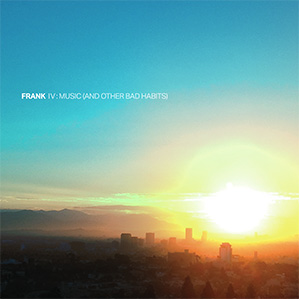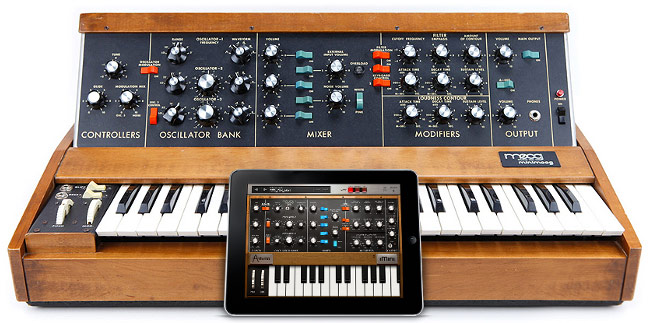
Over a series of christmases at work, I was gifted a few iPads. For someone on a laptop a good portion of the day, my early iPad usage was somewhat forced. Sure, I could read email and the Times (though their app was severely lacking back then). Not much of a gamer, so that was out. And although I enjoyed the initial novelty of using it to take notes and other productivity tasks, I soon realized I could type three or four hundred times faster on a standard keyboard. And the novelty wore off.
But I was fortunate to stumble upon an iOS-to-MIDI adapter, thinking I could control sounds generated on the iPad with my existing keyboards, and add to the sounds I could use in the band setting.
So I went around looking for usable synth apps. The options at that early stage—which is probably a couple of years ago now—were fairly limited. But in the recent 6 months or so, a wide variety of new apps and technologies, and even overall strategies, have been added to the field. As i found myself saying to Scott the other night, it’s a good time to be an iOS musician.
Below are some of the primary tools i’ve found useful. By no means is this a definitive list. Like I say, it’s an exciting time where new platforms and implementations are developed and released daily. And certainly, there are others out there who are far more qualified to instruct in this area than I. But I figure someone may get some ideas from my experience, so here goes.
Moog’s Animoog
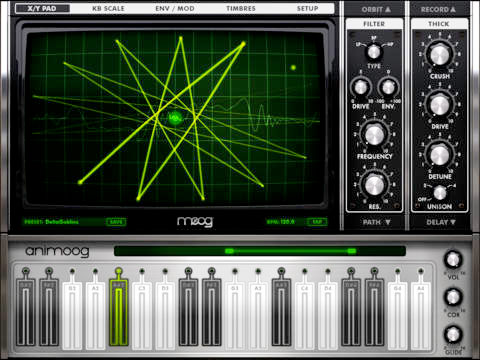
First off, to actually be useful for me, an app would need to support CORE MIDI, so it can be connected and played through a keyboard. Animoog, built specifically for the iPad (and then, iPhone), was the early adopter in this area, and continues to be a solid platform for great synth sounds.
Arturia’s iMini
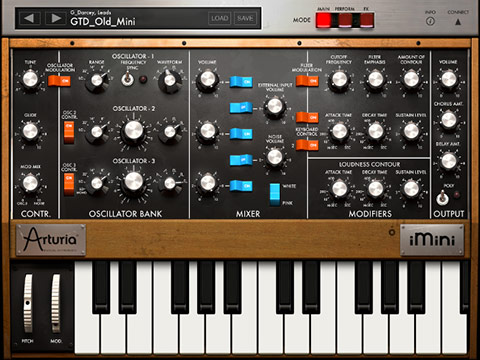
Okay, so I’m a Moog fan, when it comes to analog synths. The iMini is a replication of a 1971 Minimoog, and the sounds are incredible. Adding on to the original, Arturia included assignable touch pad controls for some performance options.
Arturia’s iSEM
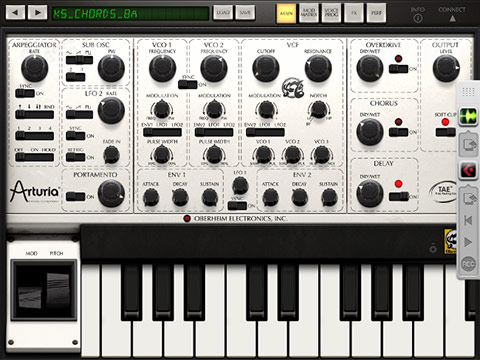
Second to my interest in Moog synths would have to be Oberheim, and the iSEM is, again from Arturia, a high quality replication, this time of a 1974 Oberheim Synthesizer Expander Module (SEM). The sounds are rich and authentic. The iSEM also adds a voice programmer, mod matrix and performance mode to make it an all-around solid and versatile synth app.
Propellerhead’s Thor

And then came Thor. Propellerhead is amazing, and I’ve been a longtime fan since ReBirth and ReCycle, and then of course, Reason. Thor is Reason’s polysonic synthesizer ported over to the iPad. You can even work on a sound in both environments, transferring sound patches between Reason and the iPad app. It doesn’t disappoint.
While on Propellerhead, I should also mention Figure. Ever bored and restless waiting for or riding on a train or airplane? Figure on an iPhone is the answer.
Waldorf’s Nave
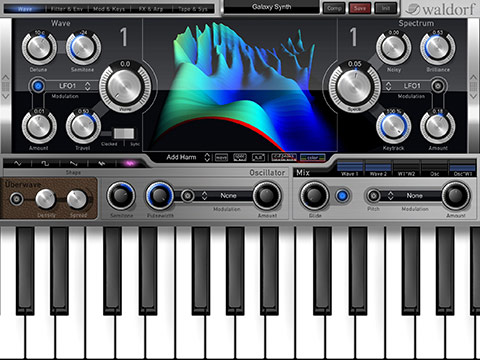
The wildcard of this round for me is from Waldorf Music. Nave’s wavetable synthesizer with 3D visual editing is definitely something to try. It has realtime touch controls similar to the iMini, a built-in 4-track recorder, and a pretty wild voice synthesizer. The app is unique and very well-crafted.
But perhaps the larger shift in the iOS musician’s world is the recently-added ability to use multiple apps at the same time, ‘wiring’ them together. Common examples could be using one app as a filter of the sound another synth app produces. Or doing a multi-track recording on the iPad’s GarageBand using several other installed synths, instruments and drum machines as inputs—various manufacturer’s products all able to co-exist and work together.
There are a few approaches to this idea of interoperability.
Apple’s GarageBand
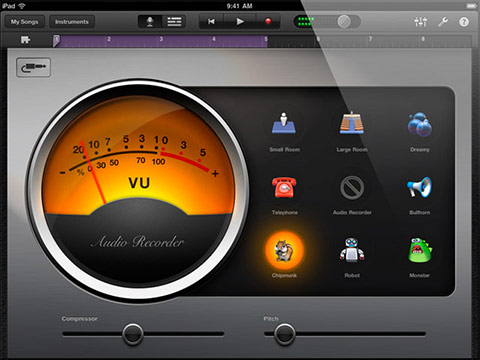
Apple got in the game with iOS 7′s upgrade of GarageBand, and now has the “Inter-app” ability to record the output of other installed synth apps. It’s still new, so the number of compatible synth apps is still rather few. But it’s promising that Apple is seemingly on-board.
Audiobus
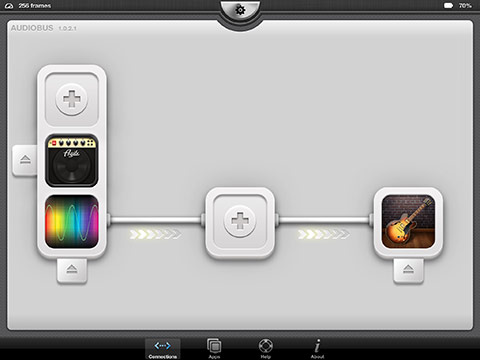
In my opinion, Audiobus is driving this train. They’ve been around and other synth app developers have been trumpeting their Audiobus integration as a primary selling point. And Audiobus now integrates with GarageBand.
it is worth noting that Korg’s new app, Gadget—which i’ll get into in a later post—adopted Audiobus but not Apple’s Inter-app support. Here’s a list of Audiobus and Inter-app audio supported apps.
Retronyms’ Tabletop
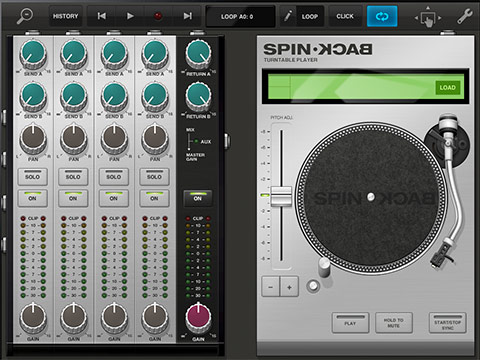
And yet another approach to iOS interoperability, or perhaps a subsection of iOS interoperability, is Tabletop. It’s a powerful “studio” app that makes use of both other iOS installed synths (albeit an even smaller list than the former two) and internally-derived studio components.
There are many other quality iPad synth apps to dig into and write about later, but a preview would include:
apeSoft’s iVCS3
Propellerhead’s ReBirth for iPad
Moog’s Filtration
Korg’s Gadget
Icegear’s Cassini
Beep Street’s Sunrizer
and the underdog, “looks-like-a-ford-but-drives-like-a-lexus” pick goes to:
Single Cell Software’s Caustic
-seth
